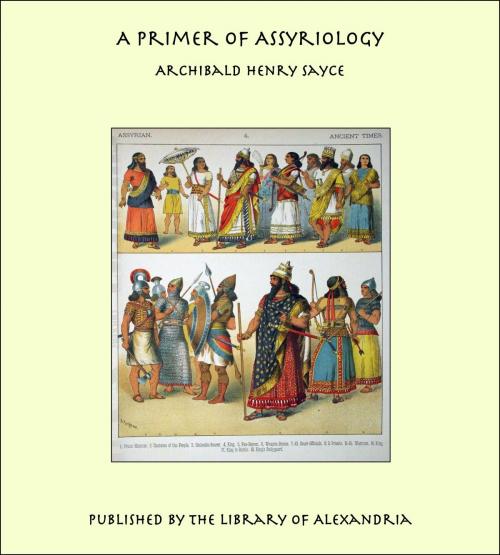| Author: | Archibald Henry Sayce | ISBN: | 9781465547231 |
| Publisher: | Library of Alexandria | Publication: | March 8, 2015 |
| Imprint: | Language: | English |
| Author: | Archibald Henry Sayce |
| ISBN: | 9781465547231 |
| Publisher: | Library of Alexandria |
| Publication: | March 8, 2015 |
| Imprint: | |
| Language: | English |
The civilizations of Babylonia and Assyria grew up on the banks of the Tigris and Euphrates. The Tigris was called Idikna and Idikla in the Sumerian or primitive language of Babylonia, from which the Semites formed the name Idiklat, by means of the feminine suffix -t. In later times the name was shortened into Diklat, and finally assimilated by the Persians to the word Tigra, which in their language signified 'an arrow.' It is from Tigra that the classical name Tigris is derived. In Genesis (ii. 14), however, the ancient name Idikla, there written Hiddekel, is still preserved. The Euphrates was called Pura-nun, or 'great water,' in Sumerian, and was frequently known as simply the Pura or 'Water,' just as the Nile is known to-day to the modern Egyptians as simply 'the Sea.' Hence it is often spoken of in the Bible as 'the River,' without the addition of any other name. From Pura came the Semitic Purat, with the Semitic suffix -t; and Purat, the Perath of the Old Testament, was changed by the Persians into Ufratu, with a play upon their own word u 'good.' The Persian Ufratu is the Greek Euphrates. The alluvial plain of Babylonia was the gift of the two great rivers. In the early days of Babylonian civilization they both flowed into the Persian Gulf. But salt marshes already existed at their mouths, and as time went on the marshes extended further and further to the south. What had once been sea became dry land, the silt brought down by the rivers forming an ever-increasing delta in the north of the Gulf. To-day the two rivers flow into one channel, and the point where they unite is eighty miles distant from the present line of coast.
The civilizations of Babylonia and Assyria grew up on the banks of the Tigris and Euphrates. The Tigris was called Idikna and Idikla in the Sumerian or primitive language of Babylonia, from which the Semites formed the name Idiklat, by means of the feminine suffix -t. In later times the name was shortened into Diklat, and finally assimilated by the Persians to the word Tigra, which in their language signified 'an arrow.' It is from Tigra that the classical name Tigris is derived. In Genesis (ii. 14), however, the ancient name Idikla, there written Hiddekel, is still preserved. The Euphrates was called Pura-nun, or 'great water,' in Sumerian, and was frequently known as simply the Pura or 'Water,' just as the Nile is known to-day to the modern Egyptians as simply 'the Sea.' Hence it is often spoken of in the Bible as 'the River,' without the addition of any other name. From Pura came the Semitic Purat, with the Semitic suffix -t; and Purat, the Perath of the Old Testament, was changed by the Persians into Ufratu, with a play upon their own word u 'good.' The Persian Ufratu is the Greek Euphrates. The alluvial plain of Babylonia was the gift of the two great rivers. In the early days of Babylonian civilization they both flowed into the Persian Gulf. But salt marshes already existed at their mouths, and as time went on the marshes extended further and further to the south. What had once been sea became dry land, the silt brought down by the rivers forming an ever-increasing delta in the north of the Gulf. To-day the two rivers flow into one channel, and the point where they unite is eighty miles distant from the present line of coast.















